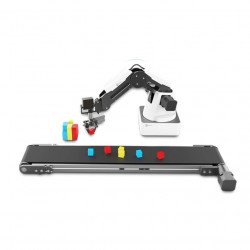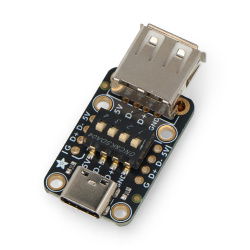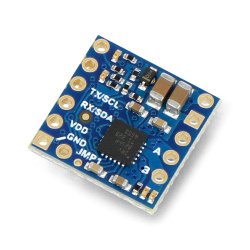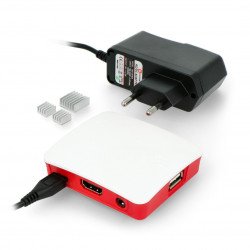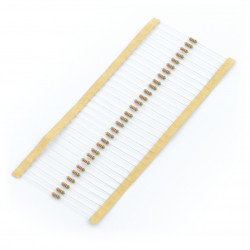Educational robots on 2 wheels
BalaC Plus ESP32 self-balancing Robot Kit M5Stack K038-B
The BalaC Plus ESP32 is a two-wheeled, self-balancing robot. The set is great for learning the basics of programming while having fun.- Reduced price
- SPECIAL OFFERS
Arduino Alvik - educational robot with Arduino Nano ESP32 - AKX00066
Arduino Alvik is an educational robot platform in the form of a two-wheeled vehicle based on Arduino Nano ESP32 . It is equipped with two advanced engines with encoders, a...Two-wheeled educational work
Educational robots on two wheels can come in different versions. The most popular model of solving the way of moving in the case of two wheels is based on their parallel placement on one axis and the use of a support (for example in the form of a rotating ball) for the main body, i.e. parts with engines and a control module. This is how the first robots are built by people who are just starting to learn robotics, electronics and programming. Many of the products on offer are in fact toolkits, thanks to which the user will be able to build his first construction on his own. The package usually also includes detailed instructions, thanks to which the whole assembly process can be carried out without making mistakes and learning many useful tricks for the future.
Educational robots on two wheels to learn programming
Part of the offer includes mobile, two-wheeled educational robots, which do not require self-assembly. They are devices that are ready to use right out of the box, and the interaction that the user undertakes is primarily learning programming. These are devices that can usually be programmed using smartphones or computers using the Scratch environment. Scratch is a programming language which was created especially for young people who are just beginning to learn to program. The friendly, clear interface can usually be adjusted to the user's level and age. Very often it comes down to the fact that programs can be written by simply arranging blocks in the right order. Subsequent levels of sophistication slowly implement a greater degree of difficulty and awareness of the code that "stands" behind these blocks. This type of robot is a great incentive for interactive play, where the child learns valuable skills.
Balancing robots on two wheels
A very important department of two-wheeled robots is that they balance on two wheels. The construction and above all programming of this type of device is a real challenge. One of the key elements that must be included in such a robot in order for it to work properly are a gyroscope sensor and an accelerometer. Based on the data from such sensors, the microcontroller controlling the device is able to continuously determine the appropriate motor movements, thanks to which the robot maintains a vertical position (on the principle of an inverted pendulum). To control a balancing robot, a properly configured algorithm of the PID regulator (proportional-integral-differential) is usually used. This type of device often arouses great interest because the way it moves and works is very interesting.
What exactly do we offer in this category?
In our offer you will find a wide range of different kinds of mobile robots with two wheels. Many of them are self-assembly devices. We offer, among other things, minisumo robots - thanks to the enclosed instructions, the user will assemble the robot himself, learn the basics of microprocessor electronics and learn how to program microcontrollers. This is an excellent training for a person who wants to take part in the popular minisumo competitions. Line follower robots are also a very practical help in learning electronics and robotics: the parts to build such a device are relatively cheap, and the independent assembly and software provides a large dose of theoretical and practical knowledge for a beginner robot. Even more versatile are the products that do not require self-assembly, because they will work well for both young people and adults, as well as children of practically all ages. Most often such robots require the user to use the appropriate software using a special Scratch language. The hardware communicates via a cable connection with a computer or using Bluetooth to establish a connection with a smartphone (with a dedicated application installed on the device). In our offer you will find platforms with different sensors and microcontrollers, which you will be able to program as you wish. For example, a balancing robot in the shape of a popular character from a two-wheeled cinema animation - Minionka - is very popular.







































































































































































































































































































































